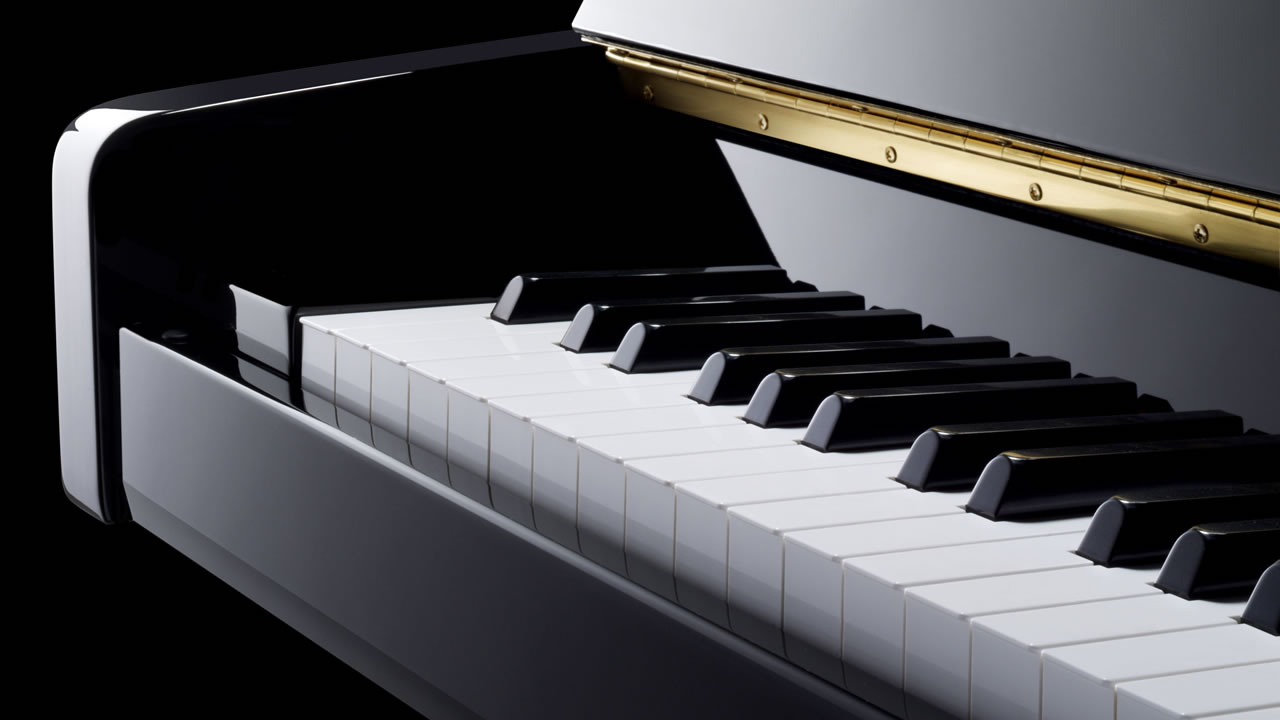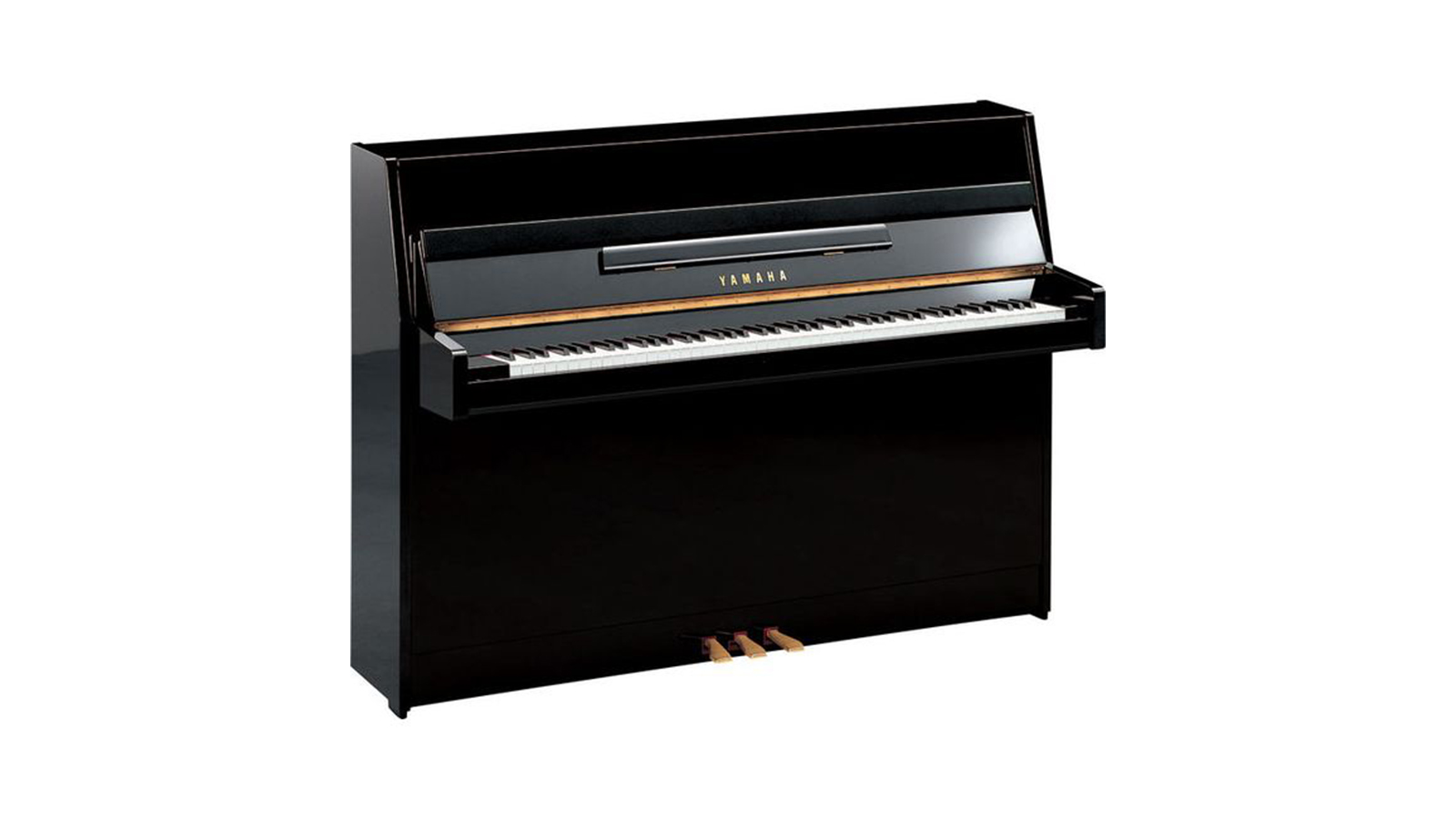MusicRadar Verdict
Although considered in some quarters to be something of a basic instrument, the b1 is a fantastic choice for beginners who are restricted in terms of space and budget but accept no compromise when it comes to enjoying the authentic sound and touch of a real piano. Distilling all of Yamaha’s considerable expertise in acoustic piano design into a compact and durable format, the b1 would make a fine musical centrepiece for any home, studio or practice room, with the silent version qualifying as possibly the ultimate affordable upright piano.
Pros
- +
High-grade hammers
- +
Ideal for beginners
- +
5-year Yamaha warranty
Cons
- -
Could be considered a little basic by some
MusicRadar's got your back
Yamaha b1 upright piano review: What is it?
The company's most affordable entry-level upright, Yamaha’s b1 is one of the world’s best-selling acoustic pianos - take a tour round any music college or university music department and you’re likely to find yourself tripping over at least five of them. But does it deserve its position at the top of the bestsellers list? We visited Yamaha Music’s flagship store in the heart of London’s West End to find out.
A compact, foreshortened cousin of the much-revered and pricier U1 full-size upright, the b1 is exactly what you’d expect to find next to the dictionary definition of a modern upright piano - classical and understated in terms of cabinet design, with minimal frills. Premium upright pianos are expensive items, so as such the b1 represents exceptional value for money as a starter piano.
The quality of the fixtures and fittings is obvious, from the brass hinge-work on the folding fallboard to the folding music desk that spans roughly half the length of the keyboard across the centre. The cabinet finish is as high quality as it gets - we tested the polished ebony version, which shone like a mirror under the showroom lights, but polished mahogany, walnut and white finishes are also available, as well as an ebony version with chrome furniture instead of the standard brass.
Yamaha b1 upright piano review: Performance & verdict

In contrast to their digital piano counterparts, acoustic pianos only have one sound, so with just one job to do it’s important that it’s done well. Considering that the b1 is the shortest piano in the b-series range at 109 cm (eclipsed in size by its 113 cm b2 and 121 cm b3 stablemates) the sound it produces is remarkably rewarding. Built in Yamaha's Indonesia factory, the b1’s relatively small stature means that it has shorter strings and shorter keys than some of its larger siblings, and it also features a laminated plywood soundboard to keep production costs down and thus maintain its affordability. Despite this, the tone is wonderfully clear and bright with rich, resonant bass, sparkling highs and a wide dynamic range that rewards enthusiastic playing with a boisterous, room-filling voice, while a gentler touch draws out correspondingly softer, more delicate tones.
Because the b1 has been designed primarily with beginners in mind, the keyboard has a relatively light action which is very easy for newbies to get to grips with but at the same time perfectly suitable for the more intermediate or advanced pianist. It feels exceptionally responsive under the fingers, and as an acoustic instrument it exhibits exactly the degree of natural expressiveness that digital pianos try so hard to emulate. Rapid playing of repeated notes is easily facilitated by the built-in single escapement action found as standard on an acoustic upright - no faking it here.
Silence is golden
Our above statement that acoustic pianos only have one sound is turned on its head somewhat by Yamaha's SILENT Piano technology, a standout feature on the options list for not just the b1 but for almost any Yamaha acoustic piano.

Kawai E200 Studio
Equivalently-priced acoustic upright from Kawai with excellent tone and touch suitable for pianists of all levels
Yamaha U1
Yamaha’s extremely popular and more expensive premium full-size upright
It works by placing a physical barrier in between the hammers and the strings, which prevents the strings being struck and brings into play a row of optical sensors located beneath the keys. The sensors detect what you play and route the information to an internal digital sound source, which in the b1's case is what Yamaha calls the SC2 module. This effectively turns the piano into a digital instrument, muting the strings and allowing you to play through headphones without disturbing the neighbours. Unlike other manufacturers who offer a similar feature, Yamaha builds its silent pianos as standalone instruments at the factory, rather than retrofitting the system to an existing standard piano.
Want all the hottest music and gear news, reviews, deals, features and more, direct to your inbox? Sign up here.
Switching to silent mode is done by pushing the middle pedal down and switching it to the left. This positions the shank stopper in such a way as to maintain the maximum amount of physical hammer movement, thus preserving the natural playing feel of the keys. Weirdly though, on the example of the b1 SC2 that we tried, the keys somehow felt ever-so slightly stiffer than those on the regular version, although there shouldn’t be any real reason for this as the internal acoustic piano mechanisms are identical.

In acoustic mode, the b1 SC2 sounds rich, bright and full, identical to the acoustic model. Meanwhile, the SC2 module’s ten onboard sounds are excellent, with sampled versions of Yamaha's flagship CFX and Bosendorfer Imperial grand pianos to choose from, plus a selection of electric pianos, organs and possibly the best harpsichord emulation we’ve ever tried. Being able to revert from what is essentially a top-notch digital piano back to the full acoustic at the flick of a pedal is a joyous experience. You do pay something of a premium for all this extra functionality, with an RRP more than a thousand pounds higher than the standard version of the b1, but if you really need the best of both worlds this is undeniably an effective solution.
Yamaha b1 upright piano review: Hands-on demos
Rimmers Music
Thepianoforever
Yamaha b1 upright piano review: Specification
- Keys: 88 Keys
- Pedals: 3 Pedals
- Dimensions (H x W x D, mm): 1090 x 1480 x 540
- Weight: 174 kg
- Contact: Yamaha
Dave has been making music with computers since 1988 and his engineering, programming and keyboard-playing has featured on recordings by artists including George Michael, Kylie and Gary Barlow. A music technology writer since 2007, he’s Computer Music’s long-serving songwriting and music theory columnist, iCreate magazine’s resident Logic Pro expert and a regular contributor to MusicRadar and Attack Magazine. He also lectures on synthesis at Leeds Conservatoire of Music and is the author of Avid Pro Tools Basics.

